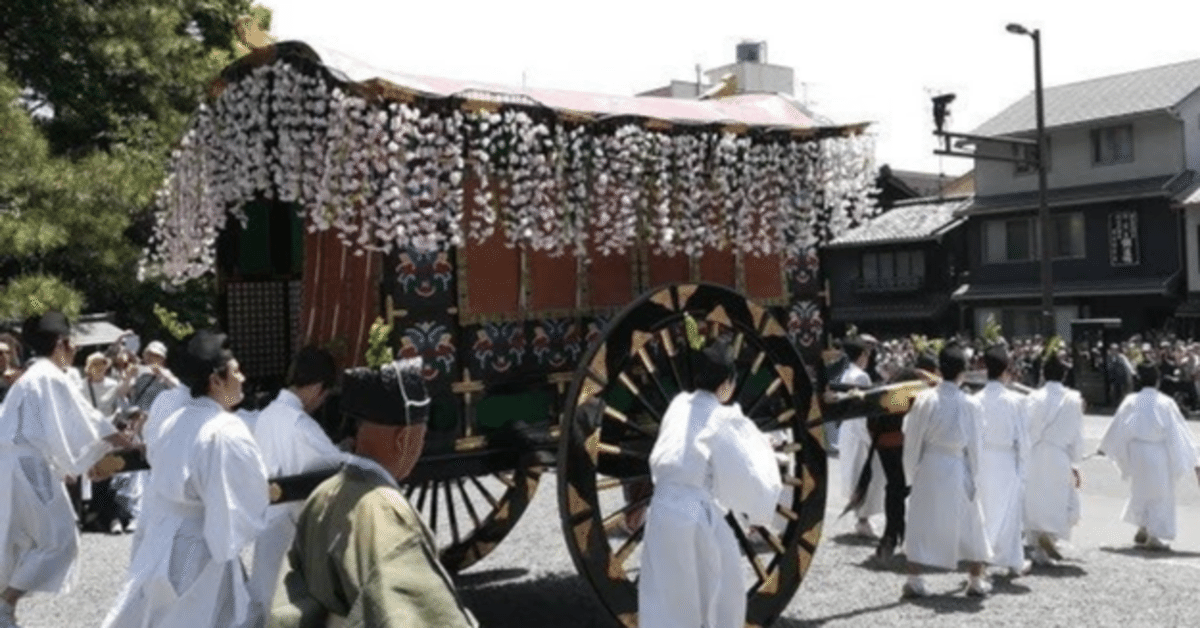
#33 京都葵祭りがいよいよ開催!
京都3大祭は葵祭り、祇園祭り、時代祭りです。
この3大祭りのひとつ葵祭りは5月15日に行われます。コロナ禍で中止されていた平安装束の行列「路頭の儀」が行われるのはなんと4年ぶり。先日主役の斎王代が決まったとニュースで報じられました。路頭の儀は京都御所から下鴨神社、上賀茂神社へと続きます。約1時間をかけて通過します。約500名の人々が約1kmにおよぶ行列に参加します。
The three biggest festival in Kyoto is The Aoi festival, Gion Festival and The Festival of Ages, Jidai Matsuri.
The Aoi Festival is held on May 15. The procession "Roto no Gi " will be held for the first time in four years due to the coronavirus pandemic. I heard the news that the woman, main character of this procession, was chosen from the general public for this year's procession.
The procession makes its way from Kyoto Imperial Palace to Shimogamo Shrine and Kamigamo Shrine. About 500 people participate in this one-kilometer procession. It will be started at 10 30 am. At each location, Kamigamo or Shimogamo shrine, the arrival time of the head of the procession is estimated. It will take about an hour for the entire location to pass a single location. About 500 people participate in this one-kilometer procession.
この路頭の儀は上賀茂神社、下鴨神社を回っていく、天皇が送った使者の行列が起源です。平安時代の衣装をまとい、馬36頭、牛4頭、500名の行列は豪華で美しい平安貴族の絵巻さながらに行われます。
This procession "Roto no Gi" was originated in messengers the emperor sent. The procession includes 511 people, 36 horses, 4 oxen and 2 Gissha (carriages). It looks like an aristocratic ancient Japanese painting on a beautiful scroll.
今回話題になった斎王代についてお話します。古代日本では天皇が使命した内親王が神に奉仕していました。この女性を斎王と呼びます。400年にわたり続いていた斎王ですが、鎌倉時代に途絶えてしまいます。葵祭りを盛り上げようと昭和の時代に市民から斎王代が選ばれ、復活しました。
In ancient Japanese history, the Emperor decided to appoint one of his daughters as a holly maiden who commited herself to the service of the deity.
Such princesses were called “Saio”. The system of the “Saio” had lasted for almost 400 years until the middle of the 13th century. She is called “Saio-Dai” now. Saio-Dai is seated in a carriage carried on men’s shoulders. She is followed by suites, warriors, court ladies, carriages for high ranked court ladies and so on.
6世紀半ば、嵐と洪水のために五穀が実らないことがありました。占いによると、賀茂の神々に対する崇拝が足りないのでお怒りだったことがわかったのです。天皇は神々の怒りを鎮めるため鈴と葵の葉をつけた馬に使者を乗せて送ったのです。その結果豊作に恵まれたということです。
In the middle of the 6th century, harvests were poor due to storms and flooding. It was found out by divination ancient people used as message from gods. It said the deities of Kamo were angry because they were not getting enough worship. The emperor sent a messenger on a horse with hollyhocks, Aoi, and a bell to appease the anger of the deities. As a result, people were able to reap bountiful harvests.
